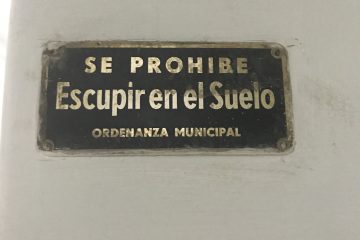I’ve been blogging for a long time, longer than most of you have been reading here, and it occurs to me someone might benefit from a repost once in a while. Here’s one from early 2009.
I’ve come up with a story that in both Spanish 1 and 2 has worked really well with teaching demonstratives. We’ve worked with those quite a bit for the past couple of weeks, and I’ve been amazed at how fast my students have become consistent and proficient at using them.

There is a girl, her name is Goldilocks, she has blond hair, and she’s however old the students decide (reviewing beginner phrases). She’s wearing a (color) dress. Is she sad? No, she’s happy. She has a friend, her friend is an animal, he’s a little bear, and his name is Charlie.
(I draw these two on the left side of the board, and then draw three long arcs at about equal widths across the board to indicate space close to them, a bit farther, and farthest away.)
Goldilocks wants lots of things. Charlie has lots of things in his house. Charlie offers her these things. Goldilocks wants soup.
Charlie says, ‘Do you want this soup’? Does Goldilocks want this soup? No, this soup is too hot. (repeat for that soup, which is too cold) (repeat for that soup over there, which is perfect).
Now what does Goldilocks need for her soup? She needs spoons. She wants one one for each hand to give us the opportunity to practice the plural. Two are too red, two are too green, and two are perfectly yellow, the color of her hair.
What is good with soup? She wants bread. One is too big, another too small, but the third just right.
We did this in Spanish 1 talking about home and eating, but you can use anything. In Spanish 2 we were working on dropping the noun to get esto, ésos, etc, and we used gorra, pantuflas, and something else that escapes me at the moment.
Believe it or not, once you’ve gotten high-schoolers to accept the fact that where a second language is concerned, they’re like kindergarteners, they’ll tolerate just about anything–including nursery rhymes!
1 Comments
Comments are closed.




Gracias…lo usaré